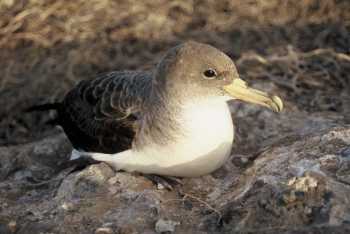Filipe Ceia (Department of Life Sciences, Marine and Environmental Research Centre, University of Coimbra, Portugal) and colleagues have published in the journal Oecologia on aspects of foraging by Cory’s Shearwaters Calonectris borealis.
The paper’s abstract follows
“Breeding seabirds are central-place foragers and therefore exploit food resources most intensively nearer their colonies. When nesting aggregations are close to one another density-dependent competition is likely to be high, potentially promoting foraging segregation (i.e. neighbouring colonies may segregate to search for food in different areas). However, little is known about spatial segregation in foraging behaviour between closely adjacent colonies, particularly in species that are wide-ranging foragers. Here, we tested for foraging segregation between two sub-colonies of a wide-ranging seabird, Cory’s shearwater Calonectris borealis, separated by only 2 km, on a small Island in the North Atlantic. During the 2010 chick-rearing period, 43 breeding adults of both sexes were simultaneously sampled at both sub-colonies. A GPS logger was deployed on each individual and removed after several foraging trips at sea. Blood samples (plasma and red blood cells) were collected from each tracked individual for stable isotope analysis. Results indicated partial spatial segregation between the two sub-colonies during local foraging trips (i.e. those of ≤1 day duration and 216 km from the colony) accounting for 84.2 % of all trips recorded. The location of the breeding sub-colony influenced the direction of travel of birds during local trips resulting in sub-colony-specific foraging areas. Although the oceanographic conditions associated with the foraging range of the two sub-colonies differed, no differences were found in the habitat exploited and in their estimated diets. This suggests that birds concentrated their feeding activity in patches of similar habitat and prey during the chick-rearing period.”

Cory's Shearwater at its breeding site, photograph by Paulo Catry
Reference:
Ceia,F.R., Paiva,V.H., Ceia, R.S., Hervías,S., Garthe,S., Marques, J.C. & Ramos, J.A. 2014. Spatial foraging segregation by close neighbours in a wide-ranging seabird. Oecologia DOI 10.1007/s00442-014-3109-1.
John Cooper, ACAP Information Officer, 16 January 2014

 English
English  Français
Français  Español
Español